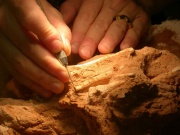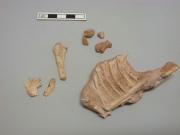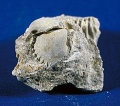Difference between revisions of "Fossil"
Jump to navigation
Jump to search
(username removed) |
(username removed) |
||
| Line 7: | Line 7: | ||
== Synonyms and Related Terms == | == Synonyms and Related Terms == | ||
| − | + | fósil (Esp.); fossile (Fr.); fóssil (Port.); Fossil (Deut.); fossiel (Ned.) | |
== Additional Images == | == Additional Images == | ||
| Line 23: | Line 23: | ||
* ''Van Nostrand's Scientific Encyclopedia'', Douglas M. Considine (ed.), Van Nostrand Reinhold, New York, 1976 | * ''Van Nostrand's Scientific Encyclopedia'', Douglas M. Considine (ed.), Van Nostrand Reinhold, New York, 1976 | ||
| − | * | + | * Random House, ''Webster's Encyclopedic Unabridged Dictionary of the English Language'', Grammercy Book, New York, 1997 |
* ''The American Heritage Dictionary'' or ''Encarta'', via Microsoft Bookshelf 98, Microsoft Corp., 1998 | * ''The American Heritage Dictionary'' or ''Encarta'', via Microsoft Bookshelf 98, Microsoft Corp., 1998 | ||
Revision as of 06:48, 24 July 2013
Description
A sedimentary stone that has preserved an impression of a plant or animal from another geological time period. Fossils are found in all parts of the world. The imprints are sometimes formed when animals, insects, or plants walked through or were trapped in mud, peat, ice, or tar. Collectively, fossils have produced a record of the evolution of many organisms.
Synonyms and Related Terms
fósil (Esp.); fossile (Fr.); fóssil (Port.); Fossil (Deut.); fossiel (Ned.)
Additional Images
Authority
- Dictionary of Building Preservation, Ward Bucher, ed., John Wiley & Sons, Inc., New York City, 1996
- Van Nostrand's Scientific Encyclopedia, Douglas M. Considine (ed.), Van Nostrand Reinhold, New York, 1976
- Random House, Webster's Encyclopedic Unabridged Dictionary of the English Language, Grammercy Book, New York, 1997
- The American Heritage Dictionary or Encarta, via Microsoft Bookshelf 98, Microsoft Corp., 1998



